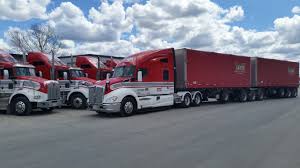
Back in the 70s, commercial driver’s ed classes pontificated about the dangers of air brakes. Today this is no longer true, though the stereotype remains. What changed? Alongside other vehicle technology, these systems evolved. Now nearly bulletproof, this standard semi truck and trailer equipment is supremely safe, with only one caveat….
10 Added Safety Features Today’s Air Brake System Sport
- Dual System Design
Divided into two independent subsystems, dual air brakes rarely fail, as if one system gives out, the other will continue to pump air. The most prominent fail-safe of air brake systems, hydraulic systems have been designed this way since the 60s. - Air Tanks
Added reservoirs now hold enough air for 6-12 braking applications, remaining in effect even if the entire system shuts down. Even with compressor failure, remaining air can bring a truck to a complete stop. - Check Valves
One-way check valves at the primary and secondary systems ensure air only moves forward, preventing air from coming back through the system and serving as a failsafe in the event of system failure or line breakage. - Air Compressor
Pumping more air than necessary, modern air compressors pump enough air to power all air-powered vehicle accessories – not just the brakes. - Pressure Protection Valve
Pressure drop in the system? Not to worry. This valves shuts off air to accessories, driving air solely into the brakes only in the event of emergency. - Low Air Warning
Another prominent safety feature, audible and visible notification of low air pops-up at 60-lbs: The time at which there is no longer enough pressure to hold springs off in the caged position (which activates parking brakes, stopping the vehicle). - Spring Brakes
Typically used for parking, spring brakes activate in the event of emergency, expanding in response to air pressure loss and kicking-in in the 20-45 psi range. - Sound
System design ensures if there is a leak, the driver will be able to hear it – even over other ambient road noises. - Tractor Protection System
Protecting the tractor’s air supply in the event the trailer disengages from the back of the truck, two valves on the tractor protection system monitor pressure in the trailer, and in the event of catastrophic pressure loss, signals the air supply valve on the dash to turn off air to the trailer, protecting the supply to the truck. - Automatic Slack Adjuster
Replacing older, manual slack adjustment technology of the 90s-2000s, automatic slack adjusters are now required by law to pass annual vehicle inspection, creating a nearly foolproof system by keeping brakes in adjustment and tractor-trailers roadworthy.
Fighting Brake Fade
An uncommon occurrence for most professional haulers, brake fade is the biggest issue with air brake systems today, yet is easily managed. It typically occurs when you’ve been sold the wrong grade of brake pad for your vehicle or driving style, causing pads to overheat, and severely limiting brake performance. It also commonly results from failure to properly maintain calipers, causing them to stick after brake application, dragging on and overheating brakes.
Ensure an air brake system that’s bulletproof. Stay on top of routine trailer maintenance with the top-quality OEM replacement parts and knowledgeable, professional service from Ainsworth Trailer Repair today.



